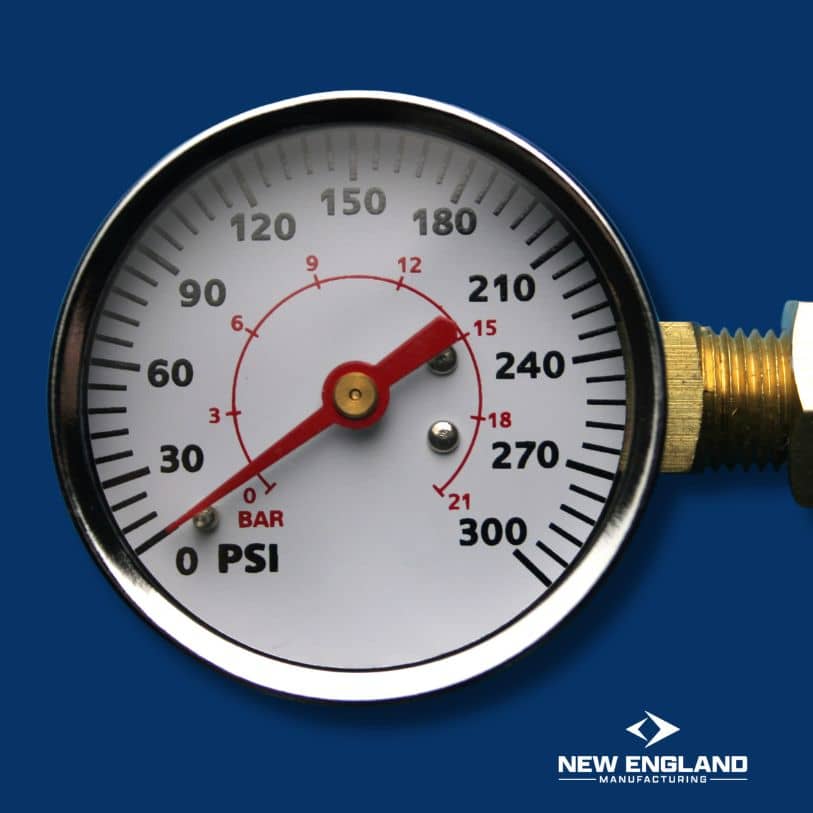Flow Fundamentals: The Basics of Water Pressure
In the world of home and industrial water systems, comprehending water pressure is not just beneficial, but essential. In this informative post, we delve into the significance of a crucial tool: the water pressure meter. Whether you’re a homeowner striving for a consistent water flow or a professional in an industry where precision is paramount, this guide is your key to understanding water pressure measurements.
Consider water pressure as the heartbeat of your water system. If it’s too low, you face inadequate flow; if too high, there’s a risk of damaging your pipes and appliances. Here, the water pressure meter emerges as an indispensable tool, helping to prevent these issues. By monitoring water pressure, you enhance the lifespan and efficiency of your plumbing systems, thus ensuring safety.
In this guide, we’ll explore three critical facets of using a water pressure meter, each providing clear, practical insights into this invaluable instrument.
Grasping the Basics of a Water Pressure Meter
Understanding the basic function and importance of a water pressure meter is the first step in effective water system management. This device measures the force that water exerts in a system, typically in pounds per square inch (PSI). The standard range for a home water system varies, but it’s generally between 40 to 60 PSI. Knowing this range is crucial for identifying when the pressure is too high or too low.
Furthermore, it’s important to understand the different parts of a water pressure meter. Most meters have a gauge that displays the pressure, a valve to release pressure if necessary, and a connection point to your water system. Familiarizing yourself with these components can help you troubleshoot issues and understand the readings more clearly.
Additionally, you should be aware of the different units of measurement used in different regions, such as PSI in the United States and bar in Europe. Understanding these variations is important when interpreting readings, especially when consulting resources or professionals from different parts of the world.
The Vital Role of Regular Monitoring
Regular monitoring with a water pressure meter is a crucial practice for maintaining the health of your water system. Consistent checks can reveal a lot about the condition of your plumbing. For instance, a sudden pressure drop might indicate a leak or blockage in your pipes. Conversely, a consistently high reading could suggest that your pipes are under too much stress, which can lead to damage over time.
Moreover, seasonal changes can affect water pressure. During colder months, pipes may contract, and in warmer months, they might expand, impacting the pressure. Regular monitoring helps you adjust and maintain optimal pressure throughout the year.
Also, if you’re making any changes to your plumbing system, such as installing new fixtures or pipes, checking the water pressure both before and after the changes is essential. This helps ensure that your modifications haven’t negatively impacted your system’s overall pressure.
Selecting the Appropriate Water Pressure Meter
When choosing a water pressure meter, consider the specific needs of your water system. Digital meters, for example, provide precise readings and often come with additional features like memory functions to store previous readings. They are ideal for situations where accuracy is paramount.
Analog meters, on the other hand, are more traditional and usually less expensive. They are well-suited for general home use where an exact reading is not as critical.
Additionally, the size and compatibility of the meter with your plumbing system are important factors. Ensure that the meter you choose can be easily connected to your system without requiring extensive modifications.
When selecting a meter, also consider its durability and reliability. A robust, well-made meter can provide accurate readings for many years, making it a wise investment for any home or business.
Effective Installation and Use of Your Water Pressure Meter
Installing your water pressure meter correctly is vital for obtaining accurate and reliable readings. Begin by turning off your water supply to prevent any potential damage or injury. Then, locate a suitable spot on your water line – typically, this is near where the main water line enters your home or near the water meter.
Follow the manufacturer’s instructions closely when attaching the meter. Ensure all connections are tight and secure to prevent leaks. Once installed, slowly turn your water back on and check for any immediate issues.
For using the meter, regularly check the readings at the same time of day for consistency. Note any significant changes and investigate potential causes. Keeping a log of these readings can help identify patterns or issues over time.
Understanding Meter Readings and Troubleshooting
Knowing how to interpret the readings from your water pressure meter can help you identify and address issues early on. A reading within your system’s standard range indicates that your system is functioning normally. However, readings that are consistently high or low warrant further investigation.
If you notice a sudden pressure drop, it could be due to a leak, blockage, or malfunctioning pressure regulator. In contrast, a sudden increase might indicate that a valve is closed or there’s a problem with the water supply.
In cases of abnormal readings, first check the most common trouble spots like faucets, toilets, and the main water valve. If these areas are functioning properly, it may be time to consult a professional plumber to diagnose and address more complex issues.
Integrating Monitoring into Your Maintenance Routine
Incorporating regular water pressure checks into your maintenance routine is key for long-term system health. Set a regular schedule for checking your water pressure – monthly checks are a good starting point. Adjust this frequency based on the age and condition of your plumbing system; older systems may require more frequent checks.
Documenting your readings over time is also important. This historical data can help you spot trends or issues that develop gradually, giving you a chance to address them before they become serious problems.
Additionally, consider having a professional inspection of your water system annually. This can complement your monitoring efforts and provide peace of mind that your system is in good shape.
Conclusion
To conclude, mastering water pressure monitoring is a vital aspect of maintaining a healthy and efficient water system. From choosing and understanding your water pressure meter to regular monitoring and maintenance, each step is integral to your system’s well-being. This guide empowers you with the knowledge and tools to ensure your system’s longevity, offering peace of mind and a well-functioning water system. Embrace this knowledge and take practical steps to maintain your water system’s health and efficiency.
Read More:
Understanding Water Pressure

Mark R.
With a strong foundation in industrial safety and fire protection systems, Mark R. specializes in creating clear, technical, and compliance-driven content. Writing for SafeTech Reports, he covers topics such as fire hydrant testing, PPE protocols, emergency procedures, and smart technology integration in safety systems. His work ensures that professionals stay informed on the latest regulations, best practices, and emerging trends in safety and infrastructure maintenance.
Get in touch
We usually respond within 24 hours
Need Reliable Water Flow Test Equipment?
For over 70 years, New England Manufacturing has been the trusted source for fire hydrant and water flow testing kits. From pitot gauge kits to custom test kits, we provide precision, durability, and expert calibration to meet your needs.
- Custom-built test kits
- High-quality pressure gauges
- Reliable calibration services


